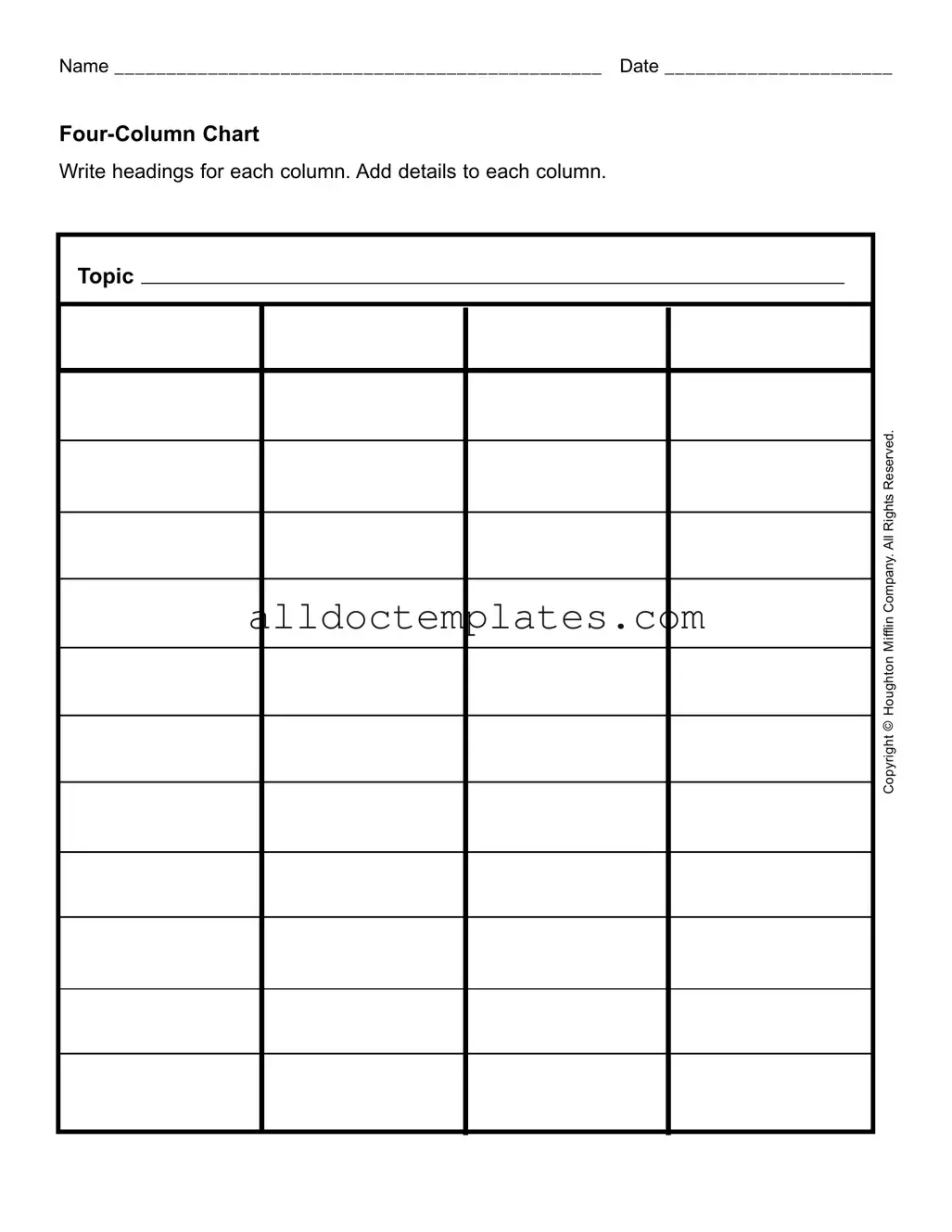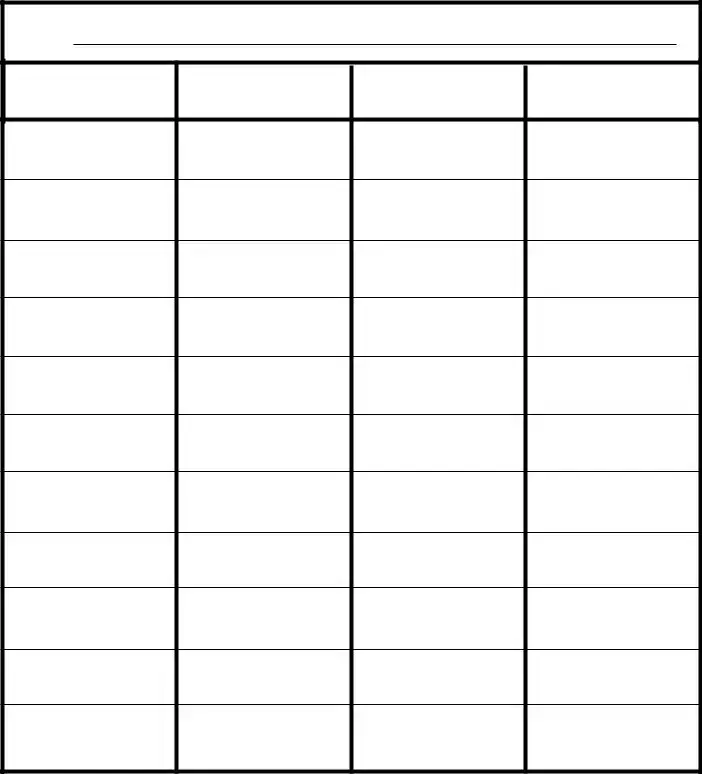Fill in a Valid Four Column Chart Form
The Four Column Chart is a structured tool used to organize information in a clear and concise manner. It consists of four columns where users can write headings and fill in details relevant to a specific topic. This format enhances understanding and retention of information, making it a valuable resource for various applications.
Get Your Form Now

